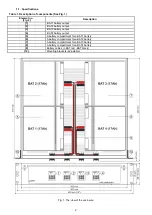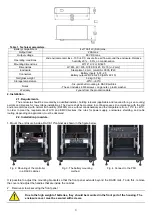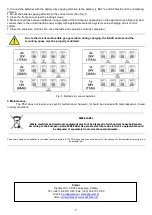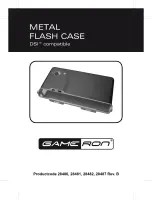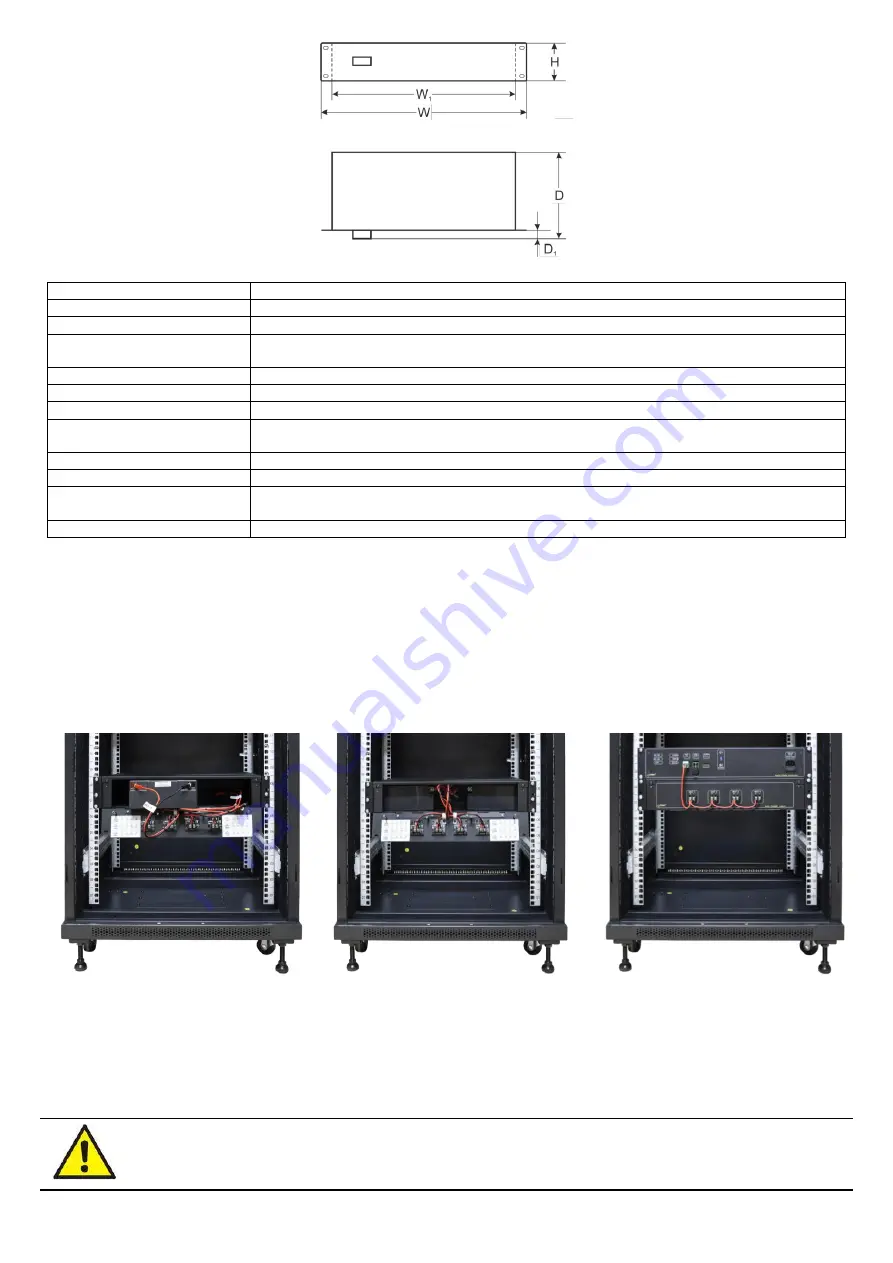
3
Table 1. Technical parameters.
Battery compartment
4x17Ah/12V (SLA) max.
Output load
20A max.
Output voltage
60V DC max.
Operating conditions
2nd environmental class, -10
º
C÷40
º
C, ensure free air flow around the enclosure. Relative
humidity 20% ... 90%, no condensation
Mounting dimensions
W=19”, H=2U, D=425
Dimensions
W=483, W
1
=435, H=88, D=425, D
1
=15 [+/- 2mm]
Enclosure
Steel plate 1,2 mm, color RAL 9005, IP20
Connectors
Battery inputs: 6,3F-2,5
Battery outputs:
Φ0,63÷2,50 (AWG 22-10)
Net/gross weight
5,0kg / 5,7kg
Storage temperature
-
20ºC...+60ºC
Notes
- Six-point butt mounting to RACK profiles
- The set includes 6 M6 cage nuts + plastic washer
Warranty
2 years from the production date
2. Installation.
2.1. Requirements.
The enclosure should be mounted by a qualified installer, holding relevant (applicable and required for a given country)
permits and licenses for low-voltage installations. The device shall be mounted in confined spaces (in accordance with the 2nd
environmental class) with normal air humidity (RH=90% max. without condensation) and the temperature from -
10°C to +40°C.
In order to meet the requirements of LVD and EMC directives, the rules for power supply, enclosures, shielding, and cable
routing, depending on application, must be observed.
2.2. Installation procedure.
1. Mount the enclosure inside a RACK 19"cabinet as shown in the figure below:
Fig. 2. Mounting of the controller Fig. 3. The battery mounting
in a RACK cabinet. method.
Fig. 4. Connect to the PSU.
It is possible to adjust the mounting brackets so that the front panel extends beyond the RACK rails. To do this, remove
the cover and adjust the handles that are inside the cabinet.
2. Remove screws securing the front panel.
Due to the high weight of batteries, they should be mounted in the front part of the housing. The
enclosure cover must be secured with screws.


